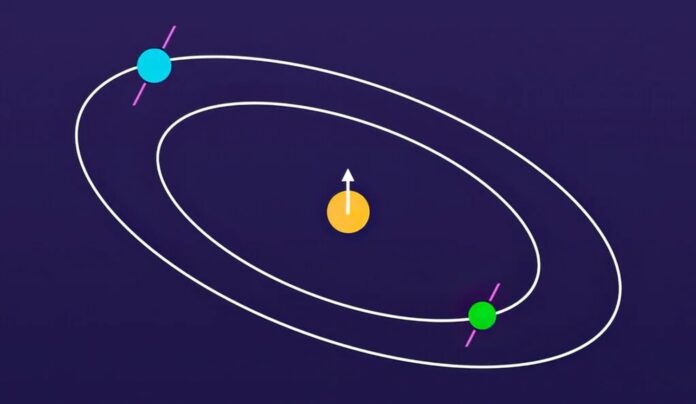The dynamical histories of planetary systems can be reconstructed through their current orbital demographics. Near-resonant systems, in which two or more planets exhibit near-exact integer ratio commensurabilities of their orbital periods, offer an especially well-constrained lens into the evolution of planetary systems.
The mystery behind the slightly slanted orbits of all the planets in the solar system around the sun has long baffled scientists. For a long time, they had believed that planets with sharply inclined orbits are caused by celestial rumblings at a high level, like planets and stars nearby pressing against one another.
However, a new study by Yale University indicates otherwise.
Scientists thoroughly analyzed pristine, multi-planet solar systems in which the planet’s orbit has remained relatively undisturbed since their formation.
Rice, an assistant professor of astronomy in Yale’s Faculty of Arts and Sciences and lead author of the study, said, “This type of configuration, where one planet’s orbit is precisely ordered with another in an exact integer ratio of orbital periods, is likely common to find in a solar system early in its development.”
“It’s a gorgeous configuration — but only a small percentage of systems retain it.”
Furthermore, scientists discovered that planets can have an orbital tilt of up to 20 degrees even in these solar systems.
Measuring the slanty orbit of TOI-2202 b, a “warm Jupiter” planet in a clean solar system, was the first task for scientists. A warm Jupiter is a much larger planet than Earth, with an orbital period notably shorter than Earth’s 365 days.
After that, scientists compared TOI-2202 b’s orbit with data gathered from the NASA Exoplanet Archive’s comprehensive census of comparable planets. Within this broader framework, the typical tilt of these planets was up to 20 degrees, with the system of TOI-2202 b being among the strongly tilted.
The study offers crucial information about early solar system development and says something important about Earth’s system: that a bit of tilting is par for the cosmic course.
Rice said, “It’s reassuring. It tells us that we’re not a super-weird solar system. This is like looking at ourselves in a funhouse mirror and seeing how we fit into the bigger picture of the universe.”
The latest research also helps Rice investigate “hot” Jupiter solar systems—those with gas-giant planets that resemble Jupiter but have extremely short orbital periods.
She is keen to determine why systems with hot Jupiters have such highly tilted orbits; when did they get tilted? Can they just be born that way?
“To find that out, I first need to find out what types of systems are not so dramatically tilted,” said Rice.
Journal Reference:
- Malena Rice, Xian-Yu Wang et al. Evidence for Low-level Dynamical Excitation in Near-resonant Exoplanet Systems*. The Astronomical Journal. DOI 10.3847/1538-3881/ad09de
